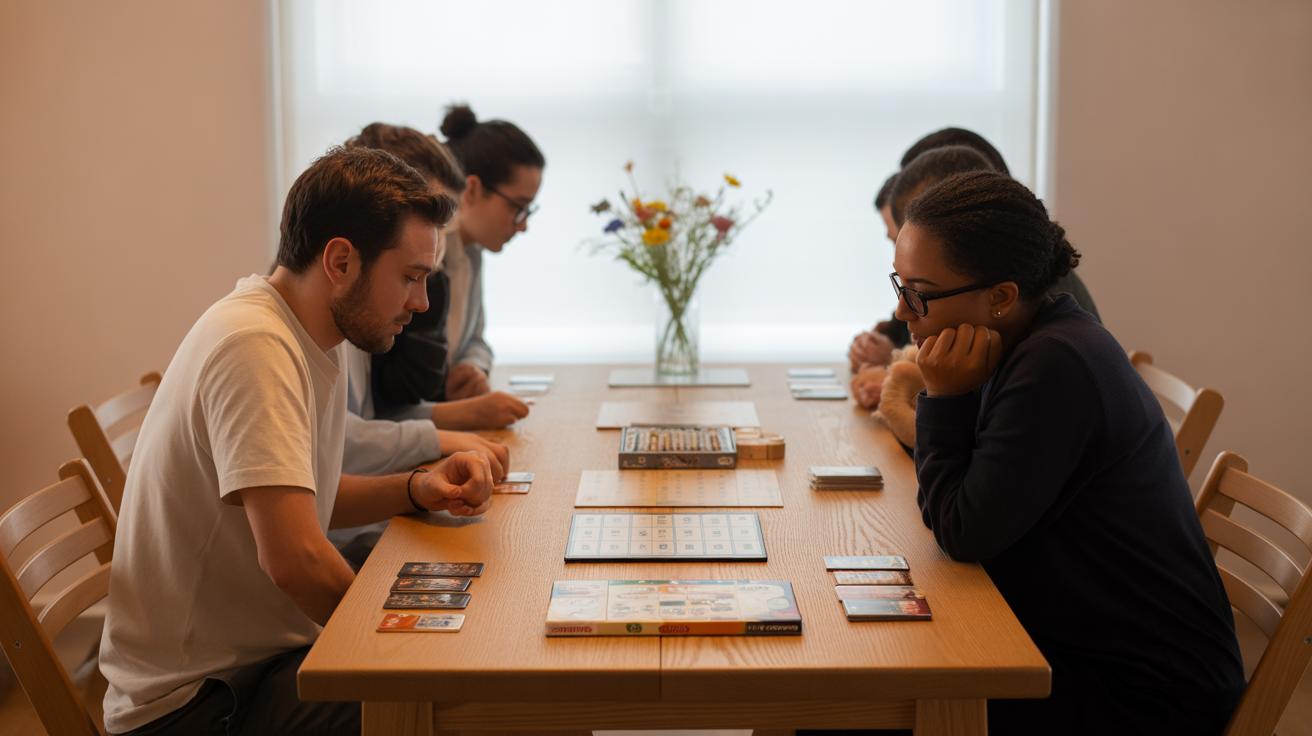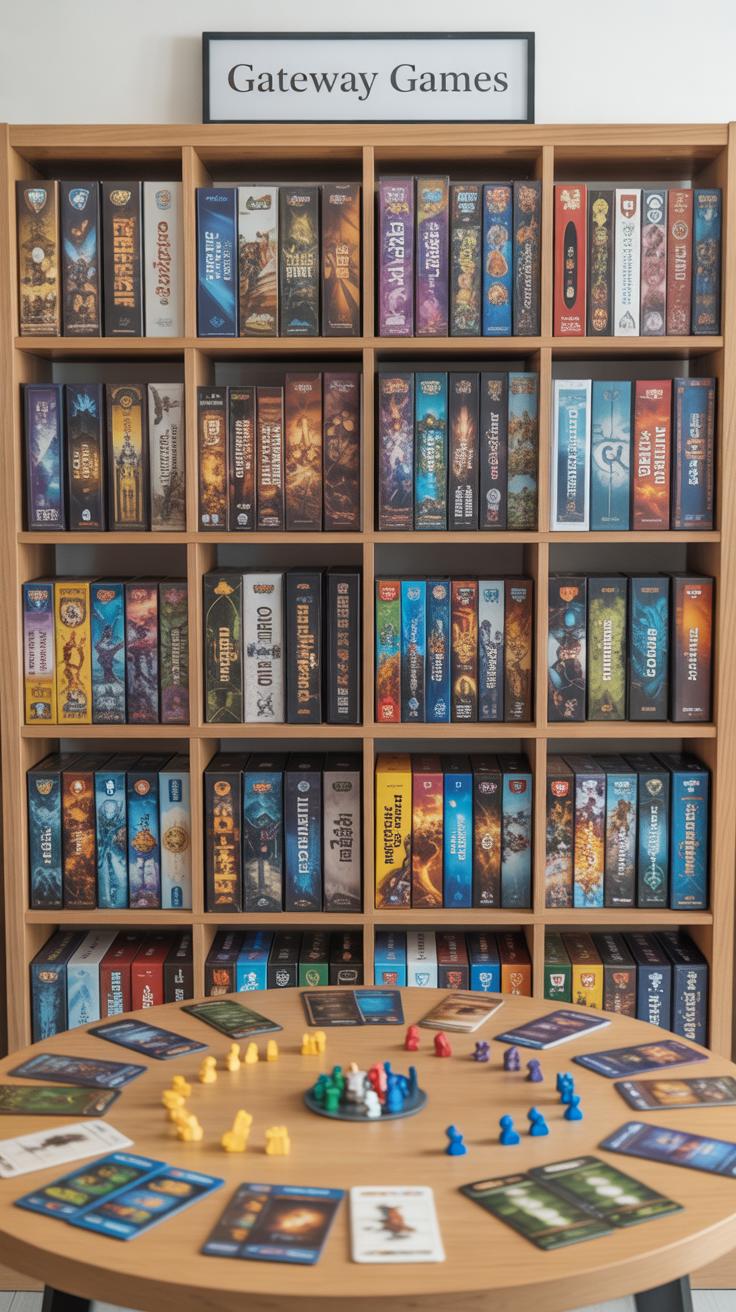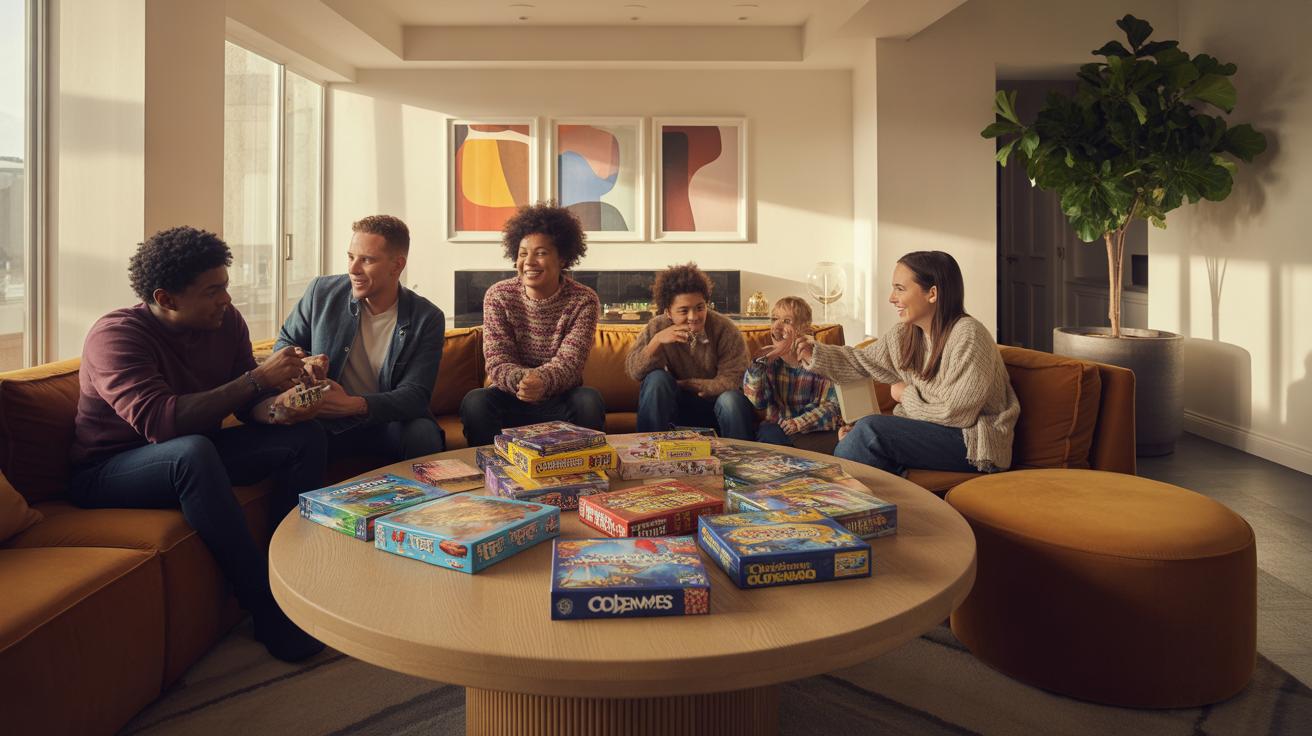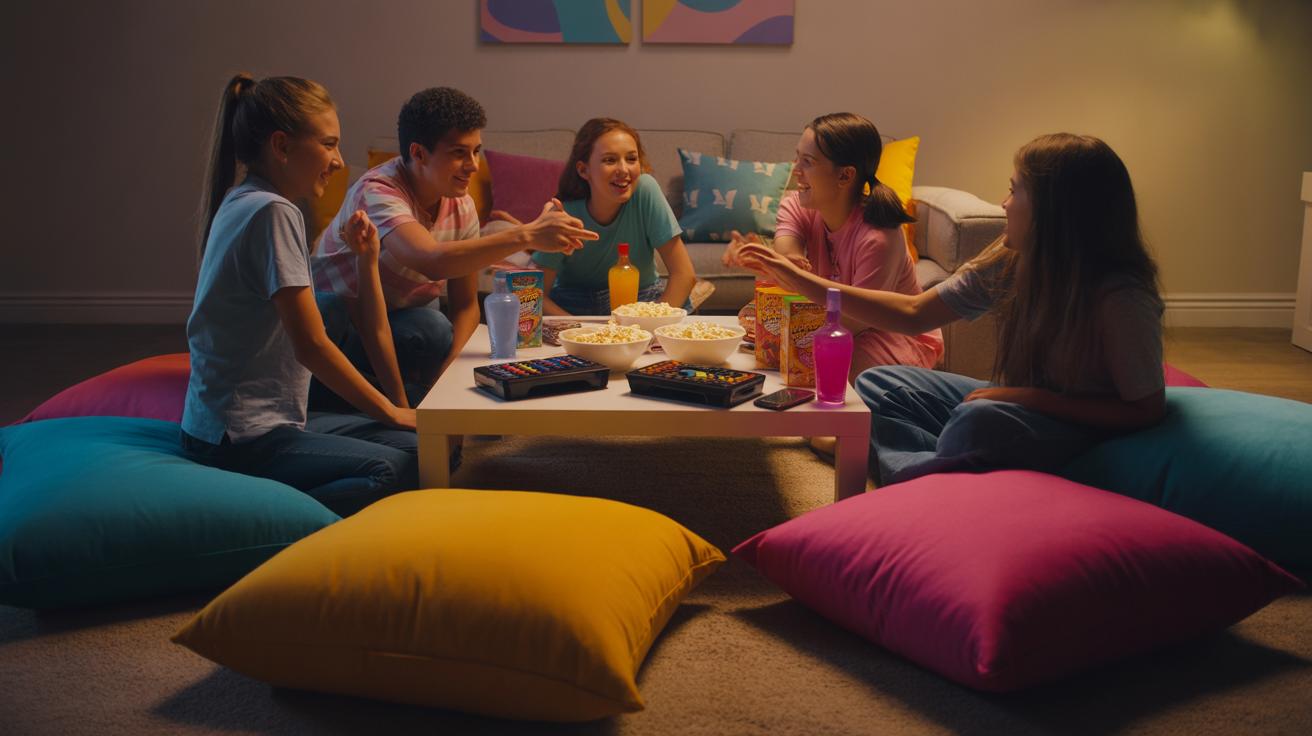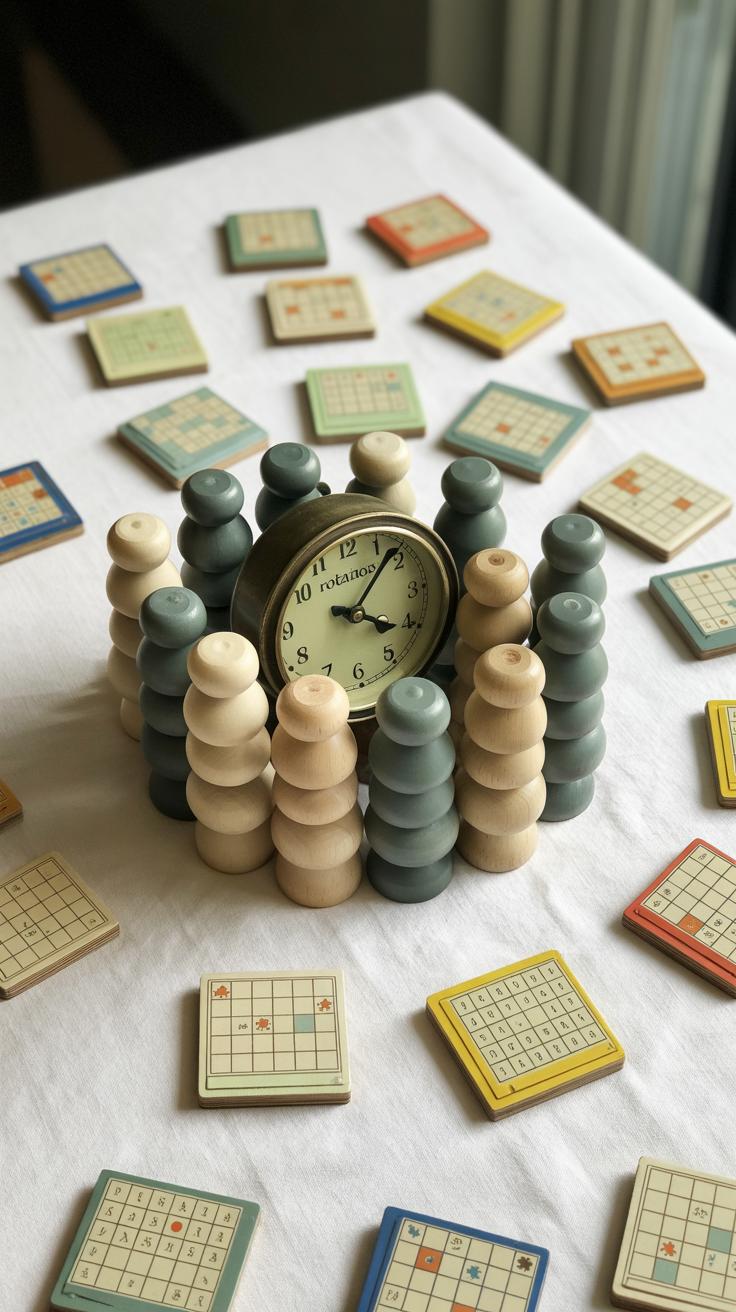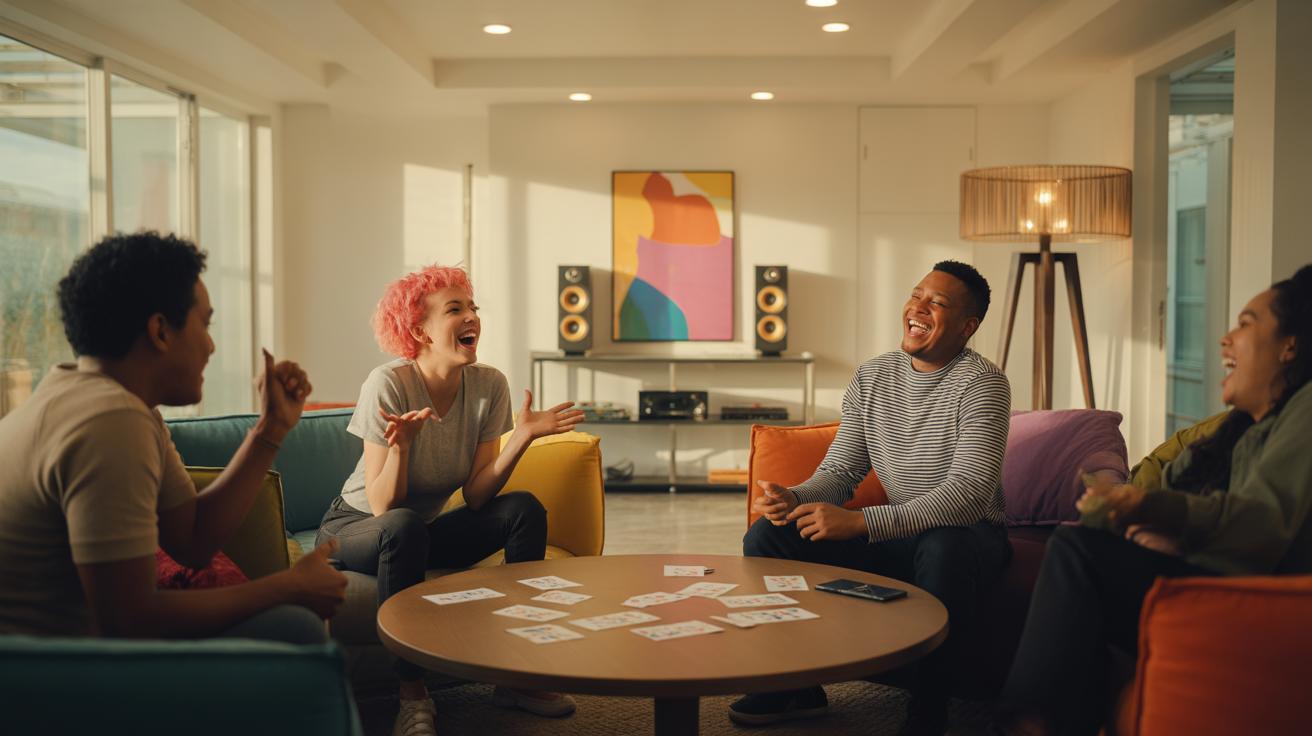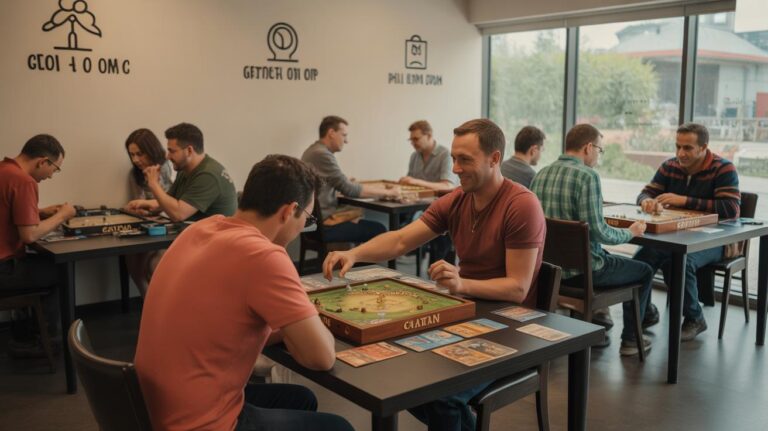Introduction
Board game nights offer a great chance to connect with friends and family while having fun. If you’re new to this, planning your first board game night might seem tricky. Don’t worry, this guide will help you get started with easy and enjoyable ideas that suit beginners well.
From picking the right games to creating a cozy environment, each step is important. This article explores ways to make your board game night smooth and memorable. You’ll learn practical tips and tricks to host a night full of laughter and great memories.
Selecting the Best Board Games for Beginners
Picking board games when you’re just starting out can feel a bit daunting. You want something not too complex, but still fun enough to keep everyone interested. It helps to think about games that strike a balance between being easy to learn and offering enough challenge so players don’t get bored quickly.
Try to have a mix of game types: strategy, party, and cooperative. For example, simple strategy games like “Ticket to Ride” or “Carcassonne” are excellent for beginners—they introduce basic planning and decision-making without overwhelming rules. For party games, options like “Codenames” or “Telestrations” can get people talking, laughing, and warmed up. Cooperative games such as “Pandemic” offer a shared goal and build teamwork, which can ease any competitive tension among new players.
Simple Strategy Games to Start With
Strategy games that aren’t too complicated help beginners grasp the core idea of planning moves ahead. A game like “Kingdomino” is straightforward and offers a satisfying mix of luck and tactical choices. It’s quick to learn, which keeps everyone engaged. Also, “Splendor” teaches resource management and prioritizing actions without being confusing. These games let new players practice thinking a few steps ahead without getting lost in endless rules.
When I first tried “Ticket to Ride,” it surprised me how much fun it was to build routes while observing what others were doing. Simple, clear goals like collecting cards or connecting spots make it easier for beginners to focus on the gameplay itself, rather than getting bogged down.
Fun Party Games to Break the Ice
Party games work wonders to loosen everyone up—especially if the group doesn’t know each other well. Games like “Scattergories” or “Catch Phrase” encourage quick thinking and laughter. They’re less about winning and more about interaction, which helps reduce any awkwardness at the start of the night.
“Just One” is another great pick because it’s cooperative yet lighthearted. When players try to get creative with clues, it sparks fun moments and shared jokes. These games open the floor for conversations, making it easier to settle into the evening. Choosing something that invites conversation and playful competition can change the whole vibe, in a good way.
Preparing Your Space for Game Night
Creating the right environment can really shape the whole feel of your board game night. You want a space where everyone can focus and enjoy without feeling cramped or distracted. It’s not just about having a table and chairs—there’s more to consider.
Creating a Comfortable Seating Arrangement
Arrange seats so that every player has a clear view of the board. Sometimes people crowd on one side, making it hard for others to see or reach game pieces. Try spreading chairs evenly around the table, and if your table is small, consider an extra surface nearby for drinks or snacks to avoid clutter.
It’s better when players can see each other’s faces easily, too. That interaction adds something to the experience—silent reactions or quick chats tend to get lost if everyone’s squished in.
Setting the Right Lighting and Ambience
Lighting can make or break the mood. Natural light is great during the day—bright but soft—but it doesn’t last forever, obviously. When night falls, soften artificial lighting to avoid harsh glare on the board. Overhead lights that are too bright can tire the eyes quickly.
A table lamp or dimmable light close to the game can help focus attention. You might even find some gentle background music improves the atmosphere, though some prefer complete quiet. Think about what works for your group and space. Too much distraction can pull attention away, while too little light makes reading cards or pieces tricky. Balancing these factors often takes a little experimenting, honestly.
Inviting Friends and Encouraging Participation
Crafting Friendly Invitations
When inviting friends, the tone of your invitation matters more than you might think. Rather than a formal message, try something casual and warm. You could say, “I’d love to have you over for a board game night—no experience necessary, just fun!” It helps to mention what kind of games you’ll play or the vibe you’re going for. Keep it light. People respond better when they feel invited, not pressured.
Choosing the right method matters too. Some prefer a quick text, others appreciate a message in a group chat where everyone can see. Sometimes a simple call works best, especially for friends who might be less comfortable with written invites. If you mix it up, you can catch different personalities. Don’t forget to check in closer to the date. A reminder can be helpful, especially if it includes a little upbeat note like, “Looking forward to games and snacks!”
Encouraging Everyone to Join In
Getting shy or hesitant players involved can be tricky. Often, these folks worry about knowing the rules or feeling left out. You can ease that by starting with very simple games first, so nobody feels overwhelmed. Maybe choose a cooperative game early on where players work together rather than compete. That can lower the pressure a bit.
Also, make a point to watch body language. If someone seems unsure or quiet, try gently inviting them with a friendly, “Want to give this one a shot? It’s pretty fun.” Sometimes encouragement from the host makes all the difference. And it’s okay if not everyone jumps in right away. Let the night flow naturally, maybe a second or third round brings out a quieter player’s enthusiasm.
In the end, small gestures matter—a smile, making eye contact, sharing light-hearted comments. These little things help everyone feel included and more eager to stay engaged. It might feel awkward at first, but that’s pretty normal. You’ll likely find that once the games start, people relax and enjoy themselves far more than they expected.
Explaining Game Rules Clearly and Simply
When you’re introducing a new board game to beginners, the way you explain the rules can make or break the experience. It’s tempting to start reading straight from the manual, but that usually overwhelms everyone. Instead, try focusing on the core mechanics first—what players need to do to take a turn, what the objective is, and how they win. You might skip some details at first and add them as you go along, to avoid drowning your guests in information.
Complex rules can feel intimidating, but breaking them into smaller parts helps a lot. For example, divide the instructions into bite-sized steps or group related actions together. You can say, “First, let’s talk about how you move,” then later explain how scoring works. Sometimes, rephrasing tricky parts in your own words makes them easier to grasp—don’t hesitate to do that.
Using demonstrations is another helpful approach. A quick practice round, or showing a sample move, lets players see the game in action without pressure. I’ve noticed that when people can physically interact with pieces and cards during a dry run, their confidence grows. Plus, it opens space for questions that they might hesitate to ask if you only spoke. Watching you play a turn might clear up confusions about how and when to act.
Have you ever felt lost halfway through a game because the rules suddenly made a twist? Trying to predict where confusion might arise and addressing those points early can save you some awkward pauses. Remember, keeping the game fun is the priority—even if it means simplifying or ignoring a minor rule initially. You can always introduce those details next time once everyone’s more comfortable.
Including Snacks and Drinks to Enhance the Experience
Food and drinks can really shape the mood of your board game night. When people feel a bit hungry or thirsty, it’s hard to fully focus on the game, right? Having snacks and drinks on hand keeps everyone comfortable and helps maintain energy, so the fun doesn’t fizzle out halfway through. I’ve noticed that when there’s nothing to nibble on, folks start to get distracted or even a bit cranky, which nobody wants.
Picking snacks for game night isn’t as complicated as it sounds. You want things easy to grab but not messy—no one wants greasy fingers all over cards or game pieces. Some good choices could be:
- Vegetable sticks with hummus or a light dip
- Popcorn tossed with just a bit of salt
- Individual cheese cubes or slices
- Mixed nuts or trail mix (check for allergies first)
- Small crackers or pretzels
These tend to avoid mess and keep the table pretty tidy, which matters more than you might guess. When everyone’s snacking without fear of ruining the game, it actually feels more relaxed.
As for drinks, offering a variety is smart—people’s tastes vary, and some might want something light while others prefer a little more flavor. You could have:
- Water or sparkling water with lemon slices
- Soft drinks or iced tea—unsweetened if possible
- Fruit juices diluted with a bit of seltzer to keep it refreshing
- Coffee or tea if your group enjoys it, especially for later in the evening
- For adult-only nights, maybe a lightly mixed cocktail or a glass of wine (but nothing too strong to avoid sleepy players!)
It might seem trivial, but these small touches make the night feel thoughtful and inviting. Have you ever noticed how a well-stocked snack table can keep the laughs going longer? That’s the kind of atmosphere you’ll want on your first board game night.
Creating a Game Night Schedule
Having a schedule for your board game night can really help things move along without anyone feeling rushed or stuck waiting too long. It’s easy to underestimate how long a game will take or overlook the time needed to set up, so a plan keeps everything on track. When I first hosted a game night, not having a clear schedule made the evening drag, and some games never even got played. That was frustrating—for both me and my friends.
Try to estimate how long each game will last by considering the number of players and how complex the game is. For example, a quick party game for 4 people might take 20-30 minutes, but a strategy game with 5 players could easily stretch over an hour. You might want to add a little buffer to these estimates, just in case someone needs more time to get the hang of the rules.
It’s also useful to plan short breaks between games. These little pauses let people stretch, grab a refreshment, and chat. Sometimes those breaks spark conversations that feel just as important as the games themselves. Without breaks, the night can feel like a marathon, and people might lose focus or get tired quicker than expected.
Does your group prefer time-based rounds or finishing one game before moving on? Experimenting with different schedules can help you find that sweet spot where everyone feels involved but not overwhelmed. Remember, the goal isn’t to fit everything in perfectly but to keep the vibe enjoyable and relaxed.
Handling Game Conflicts and Keeping It Fun
Dealing with Rule Disputes Calmly
Rule disagreements are almost unavoidable, especially when players are new or when a game’s instructions aren’t entirely clear. When a conflict arises, it helps to pause briefly but avoid dragging the debate too long. You might try these steps:
- Check the official rulebook together, if it’s handy. Sometimes, a quick look clarifies things—and it shows everyone you’re trying to be fair.
- If the rulebook is ambiguous or missing, agree on a temporary house rule for that game session. It might not be perfect, but it keeps the game moving.
- Encourage players to express their views calmly. Heated arguments rarely lead to good solutions.
- Remember, it’s okay to agree to disagree and focus on playing rather than perfect fairness.
I’ve noticed that when a host stays neutral and lighthearted, the energy stays positive—people tend to follow that lead.
Encouraging Good Sportsmanship
Keeping a friendly tone makes a huge difference. Simple reminders like “Let’s cheer for good moves” or “It’s just a game, so let’s enjoy it” can reset the mood when tensions rise. You could also:
- Highlight moments when someone helps or congratulates others, making kindness visible.
- Set an example by showing patience and congratulating winners without making losers feel bad.
- Suggest gentle breaks if the competition grows too intense—sometimes a short pause helps everyone reset.
- Use humor or light teasing carefully; it works when everyone’s comfortable but can backfire if someone feels targeted.
It’s tricky sometimes—people might want to win but don’t always know how to lose gracefully. At your first game nights, expect a bit of awkwardness there. The key is nudging the group toward respect without making rules feel heavy-handed. After all, the goal is to share time and laughs, not just to win.
Choosing Themes to Make Game Night Special
Adding a theme to your board game night can change the atmosphere in ways you might not expect. It’s not just about decorations or dressing up—though those can help—it’s more about creating a mood that pulls everyone in. Themes spark curiosity and give the night a little extra layer of fun. Suddenly, the usual “let’s play” turns into something more memorable. People might get more invested, more creative in how they engage.
For beginners, easy themes work best. Nothing that requires hours of prep or fancy gear. Think about:
- Classic board games—everyone brings an old favorite, like Monopoly or Clue.
- Puzzle night—focus on games that challenge your mind with light thinking.
- Movie night—choose games inspired by popular films or genres.
- Color themes—everyone picks a color, and you use matching snacks or cards.
These ideas keep things simple but still different, which can be a relief if you’re new to hosting.
Matching what you play and eat to the theme deepens the experience. For example, if it’s a movie night, pop some popcorn and pick games with cinematic stories, like “Sherlock Holmes” puzzles or “Star Wars” games. On a color theme night, maybe serve blue drinks or red snacks. You don’t have to be elaborate to connect your theme to the mood. Sometimes, just a small detail can pull everything together and make the night feel special in a subtle way.
Keeping Track of Scores and Declaring Winners
When you’re just starting out with board games, the scoring part can sometimes feel like a chore, or worse, a source of stress. But it doesn’t have to be that way. Simple, clear scoring methods help keep everyone focused on the fun rather than the numbers. For example, using a score sheet with a few columns, or even just marks on a piece of paper, can make tracking straightforward. In games where points accumulate, like many card games, tallying at the end of each round keeps things transparent and prevents confusion.
Some games even work well with stop-and-go scoring, where you pause after every round to quickly agree on points before moving on. This way, no one feels overwhelmed by a big, complicated tally at the end. You might also try something like awarding tokens or chips to winners instead of counting points—this adds a tactile element that keeps scoring light.
When it comes to declaring winners, the key is to keep the mood positive. Celebrating the winner’s achievement without making others feel left out—this can be tricky. You might say, “Great job on that round!” or “I really liked how you thought through that move,” to praise effort, not just success. Reminding everyone they contributed to the fun encourages a more relaxed vibe, even if some didn’t win.
Honestly, I find that when the focus shifts from “winning” to “playing,” everyone walks away feeling better. Perhaps keep the winner’s announcement upbeat but casual, and include a lighthearted gesture—like a simple round of applause or a funny “champion” hat. It sounds small, but these can ease the tension and keep the night enjoyable for all.
Planning Your Next Board Game Night
After your first few game nights, you probably start noticing what clicks and what falls flat. Maybe some games drag on too long, or certain snacks disappear faster than others. Planning the next night takes a bit of reflection. Think about which games got people really talking or laughing—and which ones left folks checking their phones. You don’t have to change everything at once, but small tweaks can make a big difference. For example, if a game’s rules confused everyone, consider picking something simpler next time or creating a quick reference sheet.
Setting a flexible schedule also helps. I found that rigid plans often stress everyone out, so leaving room for spontaneous choices feels better. Also, maybe try rotating who chooses games or suggests themes. It keeps things fresh and gives everyone a sense of involvement. Something might seem trivial, like lighting or seating arrangements, but they subtly affect how comfortable and engaged people feel.
Asking for Feedback from Players
Getting feedback can be tricky. Not everyone will speak up honestly, especially if they don’t want to hurt feelings. To avoid that, you might try anonymous surveys via simple apps or even just quick, casual chats afterward. Asking questions like “What did you like best?” or “Anything you’d change?” can reveal surprises. Try to keep it light and non-judgmental—people respond better that way. Sometimes, the best ideas come from unexpected comments, like a guest wanting a shorter game or preferring cooperative over competitive play.
If you want to involve people more, why not make feedback a part of the game night itself? A small scoreboard for favorite games or a suggestion jar might nudge shy guests into sharing thoughts. Just don’t push too hard—feedback should feel like a natural part of the fun, not a chore.
Trying New Games and Formats
Sticking to the same group of games can get stale quickly. But jumping into new games can feel intimidating too. Why not experiment with different formats to mix things up? You might try team-based games one night and then switch to quick party games another time. Sometimes, blending formats sparks surprising reactions. For instance, after a few heavy strategy games, a quick card game might be exactly what the group needs to lighten the mood.
It’s okay if some new games flop. That’s part of the process. Each attempt teaches you a bit more about what your group enjoys—or doesn’t. You could even bring a guest or two who’s more experienced to introduce new titles. Keep track of what excites people or what gets skipped over. Over time, you’ll build a mix of go-to favorites and novel picks that keep everyone curious and involved.
Conclusions
Planning a board game night for beginners is about simplicity and fun. Choose games that everyone can enjoy without feeling overwhelmed. Keep your setting comfortable and inviting to encourage everyone to join in.
Remember, the goal is to have a good time and strengthen bonds. Use these ideas to create your own board game tradition. Your first game night can be a start to many joyful gatherings filled with games and friendships.

